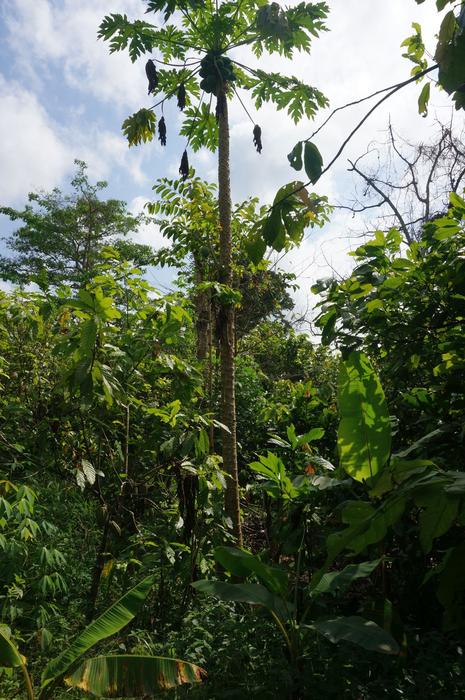Countries’ Climate Pledges Fall Far Short of 1.5C Warming Goal – Earth.Org

Analysis of Global Climate Commitments and Alignment with Sustainable Development Goals
Introduction to the UN Synthesis Report
A recent Synthesis Report on Nationally Determined Contributions (NDCs) by the UN Framework Convention on Climate Change (UNFCCC) evaluates current national climate plans against the goals of the Paris Agreement. This assessment is critical for tracking progress towards Sustainable Development Goal 13 (Climate Action), which calls for urgent action to combat climate change and its impacts.
Shortfall in Emissions Reduction Targets and Implications for SDG 13
Current Projections vs. Required Reductions
The report reveals a significant gap between current climate pledges and the targets necessary to limit global warming to 1.5°C, directly threatening the achievement of SDG 13. Key findings include:
- Projected Reduction: Current NDCs are on track to reduce global greenhouse gas emissions by 17% by 2035, compared to 2019 levels.
- Required Reduction: Scientific consensus indicates that a 43% reduction in emissions by 2030 is required to stay within the 1.5°C warming limit.
- Conclusion: The existing commitments are insufficient and place the world off course from its climate targets, jeopardizing global efforts under SDG 13.
Status of Nationally Determined Contributions (NDCs)
The effectiveness of global climate action, a cornerstone of SDG 17 (Partnerships for the Goals), is hampered by incomplete participation. The report is based on a limited set of submissions:
- The analysis includes only 64 new NDCs submitted between January 2024 and September 2025.
- These submissions represent just one-third of total global emissions.
- Over 130 countries, including major emitters like the European Union, China, Iran, and South Africa, missed the September submission deadline, weakening the collective framework for climate action.
Progress in Integrating Social and Adaptation Dimensions into Climate Policy
Advancements in Gender Equality (SDG 5)
The report highlights positive developments in integrating social equity into climate planning, particularly concerning SDG 5 (Gender Equality).
- A significant 89% of submitted NDCs now include gender-responsive measures, acknowledging the disproportionate impact of climate change on women and promoting gender equality in climate solutions.
- The upcoming COP30 summit is set to advance this agenda with a new Gender Action Plan, focusing on capacity building, women’s leadership, and access to finance, further aligning climate policy with SDG 5.
Adaptation and Resilience Planning (SDG 11 & SDG 13)
Progress is also noted in planning for climate adaptation, which is crucial for achieving SDG 11 (Sustainable Cities and Communities) and the resilience targets of SDG 13.
- 73% of the national plans now feature adaptation components aimed at building resilience to climate impacts.
- Despite this progress in planning, a critical funding gap remains. Adaptation finance accounts for less than 10% of global climate investments, with the majority of funds directed towards mitigation efforts. This imbalance hinders the ability of vulnerable communities to adapt effectively.
Conclusion and Call for Strengthened Global Partnerships (SDG 17)
Leaders and experts have emphasized the urgency of closing the gap between ambition and action. The report underscores that robust international cooperation, as envisioned in SDG 17, is paramount.
- Melanie Robinson of the World Resources Institute described the disparity as a “frightening gap between what governments have promised and what is needed.”
- UNFCCC Executive Secretary Simon Stiell acknowledged that while the emissions curve is bending downwards, the pace is “not nearly fast enough.”
- The collective failure to submit ambitious NDCs represents a challenge to the multilateralism required to address the climate crisis and achieve the full spectrum of Sustainable Development Goals.
Analysis of Sustainable Development Goals in the Article
1. Which SDGs are addressed or connected to the issues highlighted in the article?
The article primarily addresses three Sustainable Development Goals (SDGs) through its discussion on international climate action, policy integration, and social equity.
-
SDG 13: Climate Action
This is the central theme of the article. The text revolves around the global effort to combat climate change by reducing greenhouse gas emissions, as outlined in the Paris Agreement. It discusses the gap between the required emissions reduction (43% by 2030) and the current trajectory (17% by 2035), directly addressing the urgent need for climate action.
-
SDG 5: Gender Equality
The article explicitly highlights progress in integrating gender equality into climate planning. It mentions that “89% of plans also include gender-responsive measures” and that a new “Gender Action Plan” is a high-priority item for the upcoming COP30 summit. This connects directly to achieving gender equality and empowering women in the context of climate policy.
-
SDG 17: Partnerships for the Goals
The article underscores the importance of global cooperation to achieve climate goals. The entire discussion on Nationally Determined Contributions (NDCs), the UN Synthesis Report, the Paris Agreement, and the upcoming COP30 summit are examples of international partnerships aimed at a common sustainable development objective.
2. What specific targets under those SDGs can be identified based on the article’s content?
Several specific targets under the identified SDGs are relevant to the article’s content.
-
SDG 13: Climate Action
- Target 13.2: Integrate climate change measures into national policies, strategies and planning. The article’s focus on Nationally Determined Contributions (NDCs) as “national climate plans that each signatory to the agreement must prepare and update” is a direct reference to this target.
- Target 13.1: Strengthen resilience and adaptive capacity to climate-related hazards and natural disasters in all countries. This is addressed where the article notes that “73% of the national plans submitted to the UN now include adaptation components.”
-
SDG 5: Gender Equality
- Target 5.c: Adopt and strengthen sound policies and enforceable legislation for the promotion of gender equality and the empowerment of all women and girls at all levels. The article supports this by stating that “89% of plans also include gender-responsive measures” and that COP30 delegates will discuss a new “Gender Action Plan.”
- Target 5.5: Ensure women’s full and effective participation and equal opportunities for leadership at all levels of decision-making. This is implied in the priority areas for the new Gender Action Plan, which include “gender balance, participation and women’s leadership.”
-
SDG 17: Partnerships for the Goals
- Target 17.16: Enhance the global partnership for sustainable development. The article is framed around the collective international effort under the UN Framework Convention on Climate Change (UNFCCC) and the Paris Agreement, which are prime examples of this global partnership in action.
3. Are there any indicators mentioned or implied in the article that can be used to measure progress towards the identified targets?
Yes, the article mentions several quantitative and qualitative indicators that can be used to measure progress.
-
Indicators for SDG 13
- Percentage reduction of global greenhouse gas emissions: The article provides clear figures for this indicator, stating the goal is a “reduction of global greenhouse gas emissions of 43% by 2030” while the current track is a “17% [reduction] by 2035.”
- Number of countries submitting NDCs: The article mentions that “64 new NDCs [were] submitted” for the report and that “More than 130 countries missed a September deadline,” which serves as an indicator of national commitment and planning (Target 13.2).
- Percentage of national plans with adaptation components: The article explicitly states that “73% of the national plans submitted to the UN now include adaptation components,” measuring progress on Target 13.1.
- Proportion of climate finance allocated to adaptation: The article notes that adaptation finance represents “less than 10% of global climate investments,” providing a clear metric for financial flows towards adaptation.
-
Indicators for SDG 5
- Percentage of national climate plans with gender-responsive measures: The article provides a direct indicator by stating, “89% of plans also include gender-responsive measures.”
- Availability of gender-specific climate data: An implied indicator is the status of gender-disaggregated data. The article mentions that the new Gender Action Plan is expected to address “closing the gap in gender-specific climate data.”
-
Indicators for SDG 17
- Participation in international agreements and processes: The number of countries submitting NDCs and participating in COP30 serves as an indicator of the strength and effectiveness of the global partnership for climate action.
4. Table of SDGs, Targets, and Indicators
| SDGs | Targets | Indicators |
|---|---|---|
| SDG 13: Climate Action |
13.2: Integrate climate change measures into national policies, strategies and planning.
13.1: Strengthen resilience and adaptive capacity to climate-related hazards. |
– Percentage reduction of global greenhouse gas emissions (Goal: 43% by 2030; Current track: 17% by 2035). – Number of countries submitting Nationally Determined Contributions (NDCs). – Percentage of national plans that include adaptation components (73%). – Proportion of climate finance allocated to adaptation (less than 10%). |
| SDG 5: Gender Equality |
5.c: Adopt and strengthen sound policies for the promotion of gender equality.
5.5: Ensure women’s full and effective participation and equal opportunities for leadership. |
– Percentage of national climate plans that include gender-responsive measures (89%). – Development of a new Gender Action Plan with a focus on women’s leadership. – Progress on closing the gap in gender-specific climate data. |
| SDG 17: Partnerships for the Goals | 17.16: Enhance the global partnership for sustainable development. | – Number of countries participating in the UNFCCC process by submitting NDCs and attending COP30. |
Source: earth.org
What is Your Reaction?
 Like
0
Like
0
 Dislike
0
Dislike
0
 Love
0
Love
0
 Funny
0
Funny
0
 Angry
0
Angry
0
 Sad
0
Sad
0
 Wow
0
Wow
0














































.jpg.webp?itok=0ZsAnae9#)







:focal(1500,1000)/https://media.globalcitizen.org/a6/9a/a69a4720-d8a1-4715-b596-18738d03c05c/rotary_polio_hero_image.jpg?#)

/countries/sri-lanka/photo-credit---dmc-sri-lanka.tmb-1200v.jpg?sfvrsn=dc298bcc_1#)

















